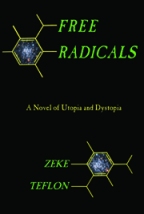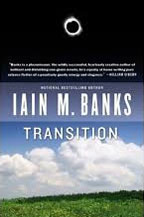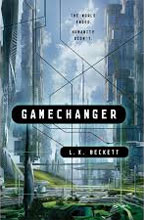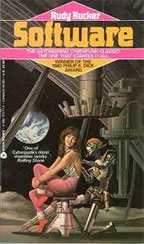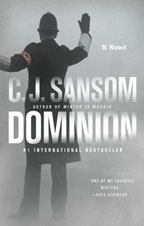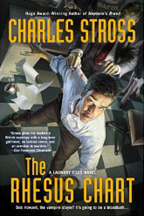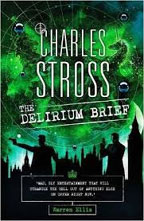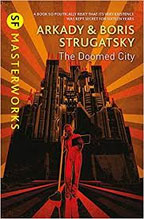
Here are a few comments from reviews of Free Radicals:
“Solidly entertaining . . . reminiscent of early Mick Farren.” —Publishers Weekly Online
“[T]he plot holds the reader’s interest and should appeal to a fairly broad audience.” —Booklist Online
“Among the best future-shock reads in years . . . If we lived in the ’60s and ’70s when audience-rattling paperbacks like Naked Lunch were cheap, plentiful and available on pharmacy spinner-racks, critics would hail Free Radicals as a masterpiece.” —Tucson Weekly
Chapter 1
I woke up this mornin’ and I got myself a . . .
Well, you can see where this is going . . .
Kel Turner was snoring, one arm dangling down from the couch toward the remnants of last night’s dinner—nine mostly empty cans of Schlitz Classic Ice and a greasy pizza box, empty but for a cardboard-like wedge missing several bites and resting against one edge of the box. A few roaches were feasting on the half-eaten piece and the hunks of cheese stuck to the bottom of the box.
Kel stirred. He opened one eye. He screamed.
There, on the end of his nose, staring at him, antennas wriggling, sat a large, brown sewer roach. Kel levitated a meter into the air and batted the roach away. He ran to the bathroom and scrubbed his face viciously. Three times.
He filled his his hands with water and emptied them over the top of his head. While smoothing back his hair, he smarted as his hand hit a large knot on the back of his scalp. Where had that come from? He carefully put his fingertips on the knot and winced, feeling what seemed like an inch-long cut. He pulled his hand back in front of his face and looked at his fingers. Flecks of blood. He washed and dried his hands, pulled his hair away from the wound again, put his fingertips on the cut, and put them back before his face. This time there was no blood. But it still hurt.
As he walked out of the bathroom, he bumped his knee on the handle of the vanity door; he gasped and reached down. His knee, no, both of his knees, were rubbed raw. What in hell had he done last night? He turned back to the sink, splashed more water on his face and hair, and muttered, “Jesus Festering Christ.”
There were black bags under his eyes, three days’ worth of stubble, long, grey, greasy strands of hair hanging in front of his face, crow’s feet spreading around his eyes like the cracks in drying mud, and a jello-like pot gut he could hold in both hands and jiggle up and down like a lard-filled beach ball. Once you were off Comp-Med, this shit happened fast. Kel was only a hundred and eighty centimeters tall, but he easily weighed a hundred kilos, and all too much of it wasn’t muscle.
He grunted in disgust, walked back into the room he called home, and started to pick up empty beer cans. To his surprise, the first one, a can of Schlitz Classic, was almost full; and it would be a shame to waste it. He took a sip. Warm, but not totally flat. It would do.
What the hell time was it? He took a hit of warm beer and blinked a gummy eyelid twice, but his readout didn’t come up. Of course not. When would he stop doing that?
His implants had been wiped in the EMP bursts during The Troubles. Then, it had been nukes exploding above the atmosphere, taking out anything with an unshielded chip for hundreds of miles in all directions. Now, any asshole who could build a half-meter parabolic dish, who knew the meaning of “high energy radio frequency,” and who could tell one end of a soldering iron from the other, could construct a HERF gun, point it in any direction, and fry all of the electronics in its beam that weren’t heavily shielded. So no. No inner-ocular displays.
Kel remembered what it had been like after the first EMP bursts: the feeling of loneliness, of being cut off from the rest of humanity. It had taken him weeks to adjust, and some people never had, like the dust addicts infesting the slumped nano buildings just down the street, shuddering, coughing, staring into space at nonexistent displays. The neuro-stim addicts were even worse, not that there were many still around. The EMP bursts had fried the tissue around their pleasure-center ‘trodes, and most who hadn’t been reduced to drooling cretins had committed suicide within weeks: no way to feel pleasure, no reason to live. Even a lot of people with ordinary inductive implants and no brain damage had gone bat-shit crazy; some said the abrupt connectivity cut felt like being struck blind. Today, two decades later, all it meant to Kel was that he’d have to learn the time from his wall screen. But that could wait.
He went to the apartment’s window, pulled up the blinds, wiped some of the grime from the top pane with the side of his hand, smeared it on the back of his pants, and peered out. The window, so old it wasn’t even photosensitive, mercifully faced north, so he was spared the agony of direct sunlight.
At first glance, things looked normal. The huge, 3-D ads floating before the apartments on the opposite side of the street were flashing their usual come-ons, the two most eye-catching ones directly facing Kel’s apartment. In the first, a heavily muscled, flak-jacketed Uncle Sam, hefting an M-99 over one shoulder, swept a pair of night-vision glasses from side to side. Its message was simple: “Report suspicious activities. Only those with something to hide need be afraid.” The ad had repeated this message endlessly for the past four months.
The second ad showed a gleaming starship blasting off and disappearing into a luminous spiral galaxy: “Your future is in the stars. Live the life you deserve!” The flashy emigration board was in stark contrast to its surroundings: dilapidated 20th‑ and early 21st-century buildings—no arching or branching nano-composite structures here, just concrete, steel, glass, and brick rectangular monstrosities interspersed with debris-strewn vacant lots and, still, the slumped remains of some of the early nano buildings that had been sprayed during The Troubles.
Depending on how much of a dose they got, they’d either oozed into gelatinous puddles or slumped into flattened-skull shapes, their windows gaping like deformed eye sockets. The stench from their entombed—or, worse, partially embedded—occupants had been intolerable for weeks after the rioting ended, and even now the only ones who would go into them were dust or spike heads.
Kel stared at the nearest skull-like ruin as a shivering human skeleton crawled out of an “eye” just above ground level and shuffled down the dirty, potholed street. Kel’s gaze followed him as he shambled past shabbily dressed men and women haggling with street vendors amidst the carcasses of graffiti-covered vehicles stranded like beached marine mammals on the street and shattered sidewalk.
As the dust head turned the corner, Kel chuckled when he glanced at the remnants of an airvan buried nose first in the broken glass-strewn corner lot. For perhaps the hundredth time, Kel mused that the driver must have been mighty surprised when his controls and engine went dead. A lot of people in those flying coffins, and on the ground, had died during the EMP bursts. Today, no one in his right mind would even think about getting into one.
Kel shifted his gaze to the right and saw two cops confronting Emmy, a middle-aged, black homeless woman, and an occasional recipient of Kel’s pocket change. One cop pushed her to the ground and began beating her with his club as she pulled her filthy plastic coat over her head. Kel was glad the window was closed so that he couldn’t hear her screams. The other cop pulled out his club and joined in. Kel shuddered as the second cop’s truncheon smashed the hand that covered her face. When the bones in her hand snapped, she reflexively pulled it down, clutching it with her other hand, and the cop connected with her jaw. Her teeth went flying in a spray of red.
The cops stopped. The one who had smashed her face hitched his truncheon back on his belt and stood towering, triumphant over Emmy’s cowering form. Kel saw his mouth start to work and, even though he couldn’t hear him, he was pretty sure, even at a distance of fifty meters, that he could make out the final word, “bitch.” . . . Fucking cops! And not a goddamned thing he could do about it.
The cop who had bashed Emmy’s face reached into his back pocket, looked up at the nearest power pole’s dead surveillance camera, its lens smashed, took something small out of his pocket, and stuffed it into Emmy’s coat. Then he activated his helmet recorder and gestured for his partner to search her. The other cop began roughly pawing the huddled figure, and shortly held up something that Kel couldn’t make out. But he was pretty sure that he knew what it was.
Emmy must have really pissed them off, because this was not the normal drill. Usually, after kicking the shit out of her, they’d drag her ass downtown, book her, and the following day she’d be hauled in front of a judge on a charge of assaulting an officer or resisting arrest. Six months and out. This time, they’d planted a bag of dust or spike on her and would charge her with possession and assaulting an officer.
If they really wanted to fuck with her, they’d bypass the dope charge and accuse her of terrorism. But that would be overkill with Emmy, and they usually reserved that charge for politicals. Whatever the charge, conviction was a foregone conclusion.
Kel exhaled noisily and looked away from Emmy. Thirty meters farther down the sidewalk, sub-teenaged hookers were hustling passersby, paying no attention to the cops, and the cops paying no attention to them. Kel took a long sip of warm beer as he watched a blubbery civ-serv in a rumpled, grey business uni approach the kids, haggle for a few seconds, and then waddle past the cops and Emmy with his hand kneading the butt of a garishly made-up 11-year-old in a see-through red mini. No, there was no reason to worry. Everything was normal.




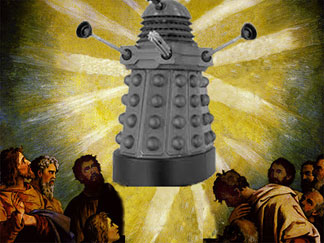
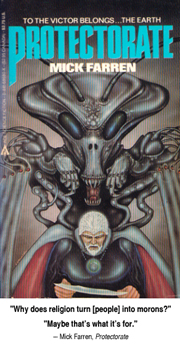


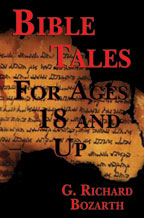
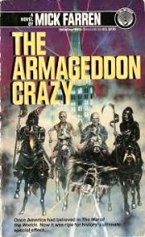

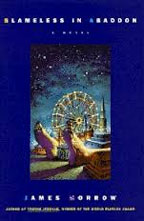
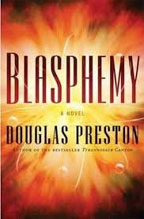
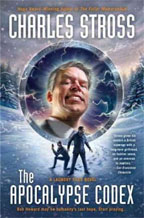
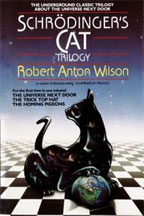
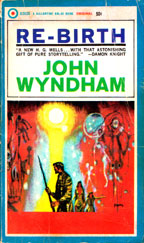 Mysterium (1994). A perceptive, well written novel about an alternate-reality American religious police state, and the casual arrogance, self-righteousness, callousness, intrusiveness, and brutality of those who run such religious states. Also deals with the evil of blindly following orders rather than following your own conscience.
Mysterium (1994). A perceptive, well written novel about an alternate-reality American religious police state, and the casual arrogance, self-righteousness, callousness, intrusiveness, and brutality of those who run such religious states. Also deals with the evil of blindly following orders rather than following your own conscience.